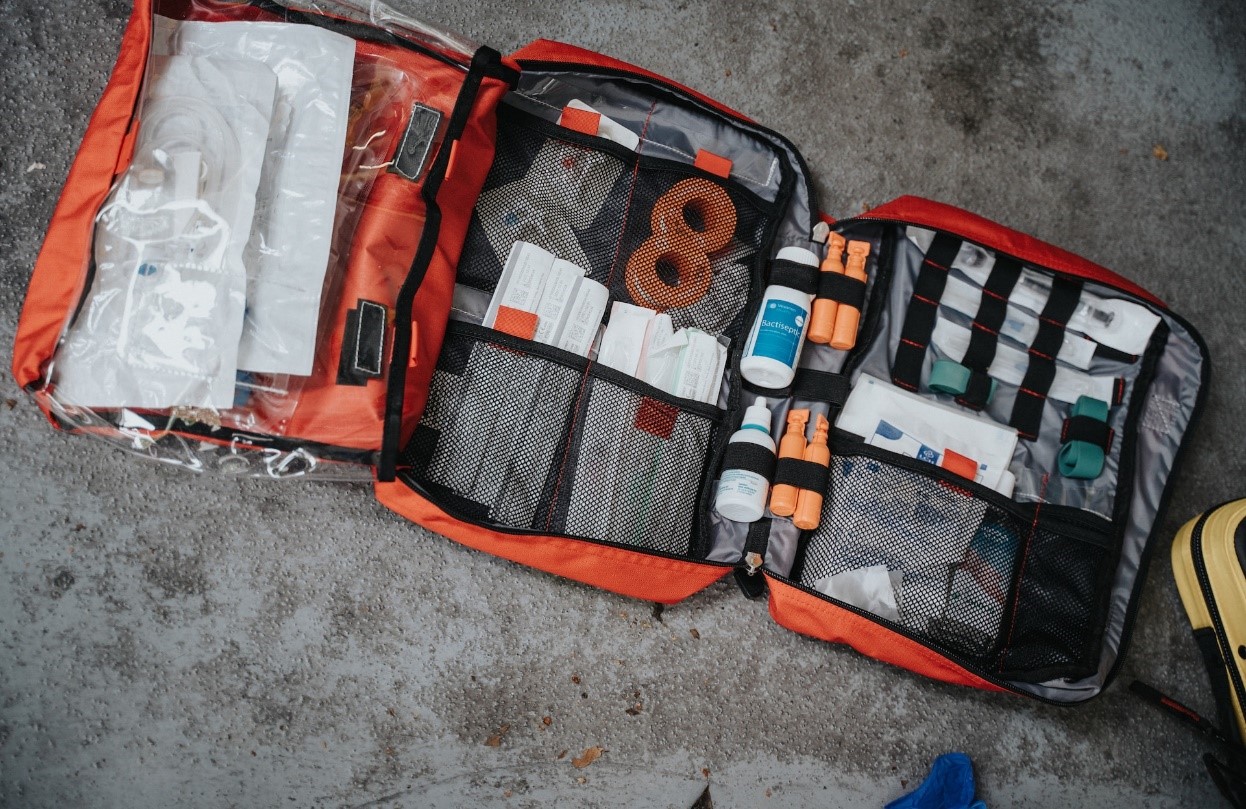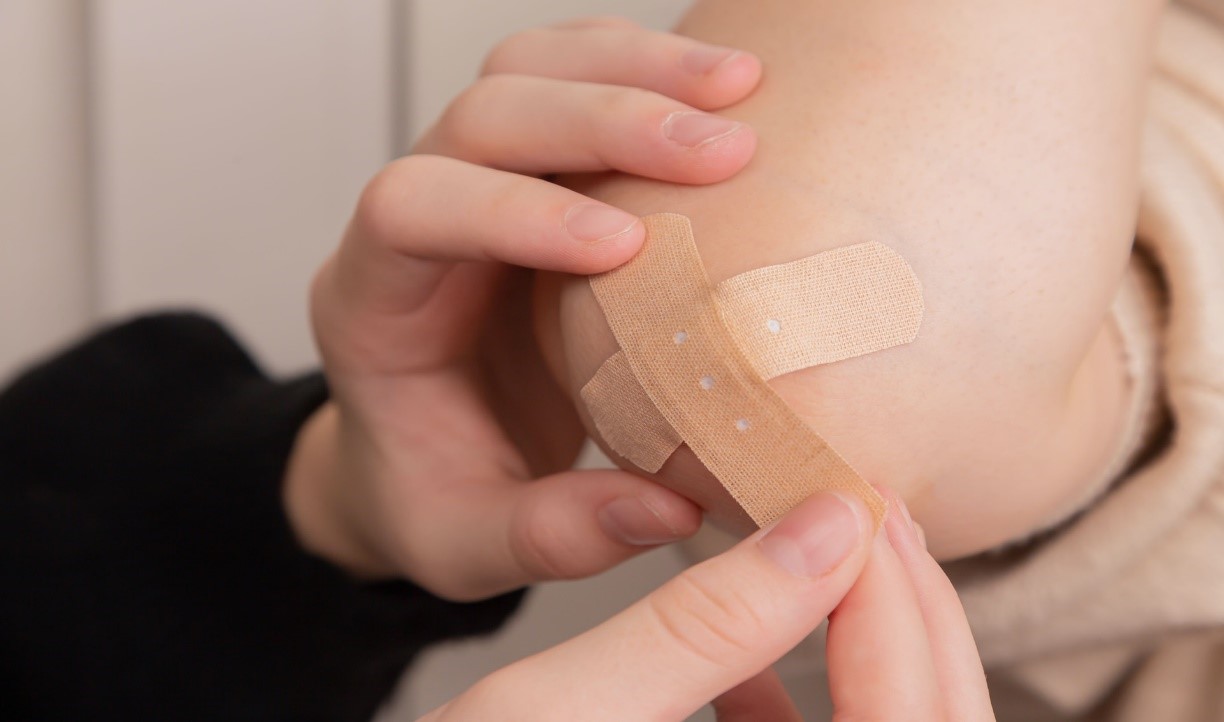First Aid Kit and Additional Tips
Welcome to the final part of our First Aid 101 series. In this segment, we'll cover the essentials of a well-equipped first aid kit and provide additional tips to enhance your first aid skills.

Figure 1. First Aid Kit Essentials.
Step 15: First Aid Kit Essentials
Figure 1 shows first aid kit essentials. Having a well-stocked first aid kit is crucial for quick and effective response to emergencies. Here's what your kit should include:
- Adhesive bandages in various sizes
- Sterile gauze pads and adhesive tape
- Antiseptic wipes and hydrogen peroxide
- Scissors, tweezers, and splinter remover
- Instant cold packs and elastic bandages
- Disposable gloves and CPR face shield
- Pain relievers (aspirin, ibuprofen)
- Antihistamines and epinephrine auto-injector (if needed)
- First aid manual and emergency contact numbers [1]
Step 16: Stay Calm and Communicate
In any emergency, maintaining your composure is essential. Keep these tips in mind:
- Stay Calm: Panic can hinder effective response. Take deep breaths and focus on the steps you need to take.
- Communicate Clearly: When calling emergency services, provide concise and accurate information. Use simple, clear language.
- Reassure the Person: If you're assisting someone, offer reassurance and let them know help is on the way.
Step 17: Learn CPR and First Aid
Consider taking a certified first aid and CPR course. These courses provide hands-on training and boost your confidence to handle emergencies:
- CPR: Learn cardiopulmonary resuscitation (CPR) for adults, children, and infants. CPR can save lives by maintaining blood flow and oxygen circulation.
- First Aid Training: Comprehensive first aid courses cover a wide range of emergencies, from minor injuries to life-threatening situations. [2]
Step 18: Be Prepared for Special Situations
Tailor your first aid knowledge to your environment and the people around you:
- Children and Infants: Understand pediatric first aid techniques and be prepared for child-specific emergencies.
- Senior Citizens: Be aware of common health issues in the elderly and how to provide appropriate care.
- Pets: Learn basic first aid for pets, including how to handle injuries and perform CPR on animals.
Step 19: Regularly Update and Maintain Your Kit
Check your first aid kit regularly to ensure it's fully stocked and that medications haven't expired. Update your skills through refresher courses to stay informed about the latest techniques.
Step 20: Seek Professional Help
While first aid is essential, it's not a substitute for professional medical care. In serious or uncertain situations, always seek help from medical professionals.
Congratulations! You've completed our First Aid 101 series. By following these steps and tips, you're better equipped to respond effectively to various emergencies and provide essential assistance to those in need. Remember, your actions can make a significant difference while waiting for professional help to arrive. Stay prepared, stay informed, and be ready to lend a helping hand when it's needed most.
References:
- https://nhcps.com/lesson/cpr-first-aid-first-aid-basics/
- https://nhcps.com/lesson/cpr-first-aid-aed-choking-adults/
Cite this article:
Hana M (2023), First Aid 101, AnaTechmaz, pp.5





